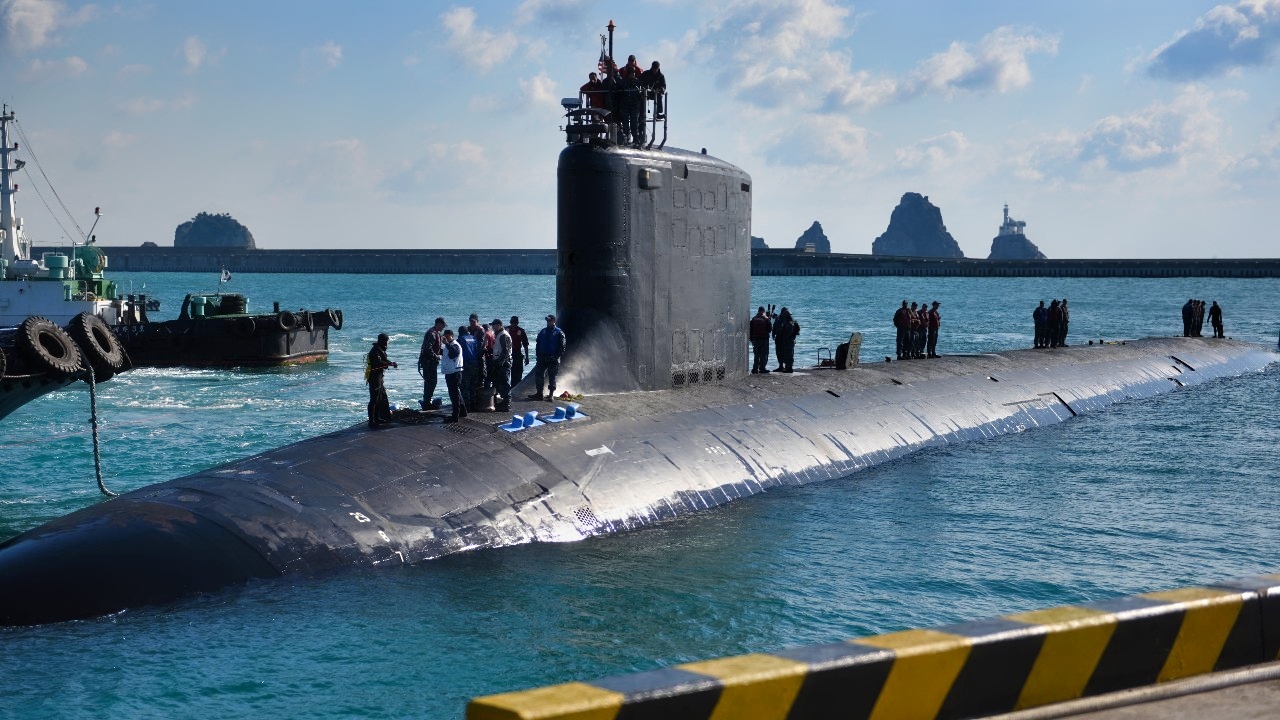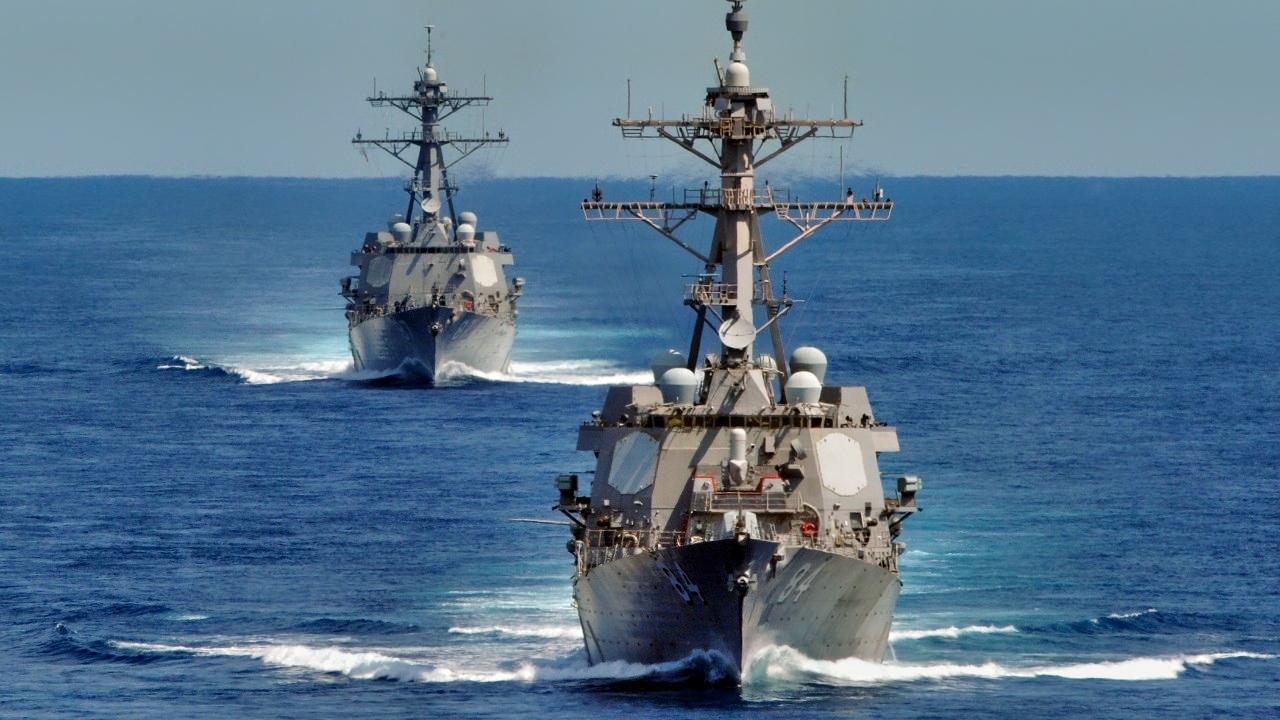How to Reboot the U.S. Navy
If the U.S. Navy is in a bad way—and it is, amidst travails such as collisions and other mishaps at sea, shipboard fires, shipbuilding debacles, and even photos of rusty ships of war—changing minds and hearts will make a start toward renovating its standing as the world’s premier saltwater fighting force.
Troubles in the hallways? Change the culture. Everything a big institution does lies downstream from its culture. Institutions are groups. Culture is the sum of the habits of mind, sentiment, and deed that prevail among the individual human beings who constitute the group. It’s the collective attitude toward problems and solutions. If systemic troubles afflict an institution, getting a critical mass of members to acknowledge, and feel in their bones, that there is a problem marks the first step toward a solution. If group members agree that there is a problem and that solving it is important and urgent, they will mount a concerted effort to remedy whatever besets the institution.

An institution like the United States Navy.
If the U.S. Navy is in a bad way—and it is, amidst travails such as collisions and other mishaps at sea, shipboard fires, shipbuilding debacles, and even photos of rusty ships of war—changing minds and hearts will make a start toward renovating its standing as the world’s premier saltwater fighting force. As it prospers anew, it will regain its reputation among foes, friends, and bystanders. They will regard it as their worst enemy or best friend. And U.S. foreign policy and strategy will prosper in such embattled climes as the Western Pacific, Middle East, and North Atlantic.
So it behooves every mariner, from the greenest enlisted sailor to the most ancient chief petty officer or admiral, to take a direct hand in the nation’s foreign-policy fortunes. Including junior officers! They should view their duties that way and act accordingly—accepting personal risk when need be. At least, that was my message last week during an exchange with one newly commissioned officer during Q&A at a training command neighboring the Naval War College. The topic of my talk was naval logistics, but the question posed was this:
How can very junior folk—newcomers who by definition hold little authority over how the U.S. Navy transacts business—help bolster the Navy’s actual and perceived competence in the profession of arms?
An intriguing question, and it’s one with direct impact on U.S. foreign policy and strategy. After all, reputation is everything in world politics. To see why, think about the late Henry Kissinger’s formula for analyzing deterrence. Kissinger defined deterrence as a multiple of capability, resolve, and belief. If we want to deter an antagonist from doing something we deem unacceptable, our leadership issues a threat to inflict an unbearable penalty on the antagonist if it takes the action we proscribe. And then it’s up to the leadership to prove to hostile magnates that we can and will make good on our threat.
We should leave no doubt.
Breaking things down Kissinger-style, the challenge of deterrence is to field military forces capable of carrying out our threat; muster and display the willpower to use those forces under circumstances we say we will; and convince the opponent of our capability and our determination to use it. This is multiplication, not addition. If any one of these factors—capability, will, belief—zeroes out, so does deterrence. Adversary leaders know what they perceive. They decide whether they are deterred or not. That’s the unnerving part about using arms to dissuade or persuade. The target audience might misjudge one or more variables, or just fling caution to the wind.
What we do matters. But it might go for naught.
The outlook gets murkier. The past few years I’ve taken to amending Kissinger’s formula by inserting another variable in his equation. Competence is the fourth factor, the point being to keep the human factor in capability front and center in calculations of deterrence, coercion, and reassurance. Why? Because it’s easy—and indeed commonplace in precincts inside the Beltway—for military people to conflate capability with matériel. With ships, planes, and tanks, in other words.
Doing so masks the fact that the finest weapon is no better than its wielder. Only a skilled, motivated crew can wring maximum design performance from its hardware. Reducing everything to widgets misleads. It obscures the role the human factor plays in strategic competition and warfare.
That’s why it’s important how influential audiences rate U.S. Navy competence. They might admire American ships and planes as physical implements, but efforts at deterrence, coercion, and reassurance will suffer if they lose faith in American crews’ ability to handle their weapons adroitly in peacetime maneuvers and combat. After all, it’s possible to brandish an excellent weapon and lose. In my day, during the first tilt against Saddam’s Iraq, common wisdom held that we could have switched arsenals with the Iraqi military and still won. That’s the cultural dimension.
But it cuts both ways. We appeared dominant then. But if doubts about U.S. naval and military competence penetrate deeply enough in adversaries’ minds today, they will no longer take threats from Washington DC seriously. Nor will friends take comfort from Washington’s promises.
Reputation is everything.
So repeated mishaps, not to mention underperformance at the basic blocking and tackling of naval affairs, such as delivering ships and planes on time and on budget, are freighted with consequences beyond the obvious. A navy’s proficiency at equipping, training, and operating a fighting fleet matters a great deal. Without a healthy human factor the fleet’s prospects dim for high-seas battle. That’s bad enough. But peacetime strategic competition is a war for perceptions. The force that appears best equipped and most skillful positions itself for success in this virtual war.
It impresses others.
If the U.S. Navy has problems with actual or perceived competence, it’s up to the officer and enlisted corps to mend them. What can junior sailors do? Two things. One, grok that these problems are real and consequential, and vow to fix them. New blood can change an organization’s culture. Sometimes it does so swiftly, as during World War II, when an infusion of officers newly recruited from the civilian world transformed the culture within the submarine force. Interwar submarine officers had been indoctrinated to fight enemy navies, principally imperial Japan’s. After Pearl Harbor, though, the naval high command instructed the Pacific Fleet submarine fleet to assail anything flying a Japanese flag—including merchantmen plying the seaways that bound Japan’s dispersed island empire together.
The latter were a juicier target. They carried commodities without which the empire could not survive.
But it turned out that attacking freighters, tankers, and transports demanded a different skillset from that drummed into sub skippers between the world wars. Many officers found it impossible to shake the prevailing doctrine and culture. So SUBPAC, the Pacific Fleet submarine command at Pearl Harbor, took to allotting captains two patrols to show results. Any captain who failed to produce in that time was relieved of his boat and, in all likelihood, replaced with a newcomer who had not been so acculturated. Firings abounded, to the tune of 30 percent of captains dismissed per year.
By changing out personnel ill adapted to the new mode of sea warfare for those harboring few preconceptions, SUBPAC changed the culture in the silent service in short order.
Rapid cultural change can happen. The youth movement within the sea service should realize that, and vow to institute change as they rise to positions of authority in the coming years and decades. At some point they will wield the clout to effect direct influence on service culture. Unfortunately, history suggests it takes a Pearl Harbor to break a culture overnight and prepare the way for something sudden and better. No one wishes for that.
That being the case, and barring such a seismic event, chances are the upcoming generation will have to bide its time. Junior officers and enlisted should do their darnedest to instill a culture fit for the times within the small-scale divisions and departments entrusted to them. If they institute cultural reform by increments, the U.S. Navy will refurbish its reputation for competence over time. The rising generation will have radiated a healthier culture throughout the hierarchy—and restored the service’s prospects for prevailing in battle and shaping opinion in operations short of war.
And two—this is the hard one—refuse to be career-minded. Bureaucracies are machines. They mass-produce the same repertoire of routine outputs, over and over again, and machines do not readily reinvent themselves when operating conditions change around them. They dislike change, and grind down proponents of it. Given these dynamics it is possible, indeed all but certain, that there will be casualties among seafarers who challenge standard ways of doing things. Careers will end. But it must be done.

It’s tough to counsel a youngster to put a promising career at risk for the sake of the larger good. But we need a fearless contingent to heal an ailing culture—and brighten the nation’s prospects in an out-of-control world.
Make it so.
About the Author: Dr. James Holmes
Dr. James Holmes is J. C. Wylie Chair of Maritime Strategy at the Naval War College and a Faculty Fellow at the University of Georgia School of Public and International Affairs. The views voiced here are his alone.
Image Credit: Creative Commons.


